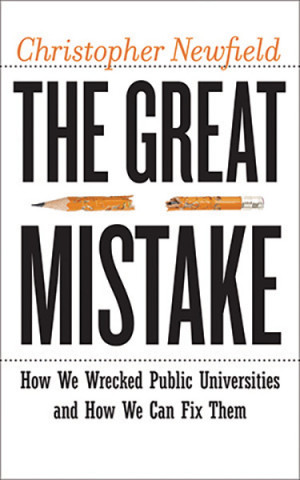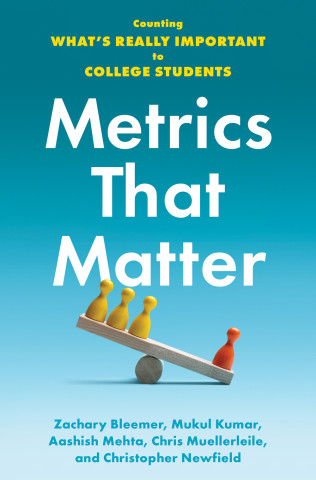by Anonymous
One valuable point made by the recent UCOF report is that extramurally-funded research is not a net source of revenue to UC, unlike what many people seem to believe. The report also made several good recommendations for reducing the cost of extramurally-funded research to UC, such as working to increase ICR rates. While these are certainly very helpful activities, they are not a complete solution because extramurally funded research can never reach, on average, a cost-neutral basis. The reason for this is that the demand by research universities for extramural funding will always exceed the supply, thus driving down success rates. The UCOF report did not consider the cost to UC of efforts spent on preparing proposals that were never funded.
Success rates for proposals to federal science agencies are rarely above 35% and in many fields are trending down to 10%. A large amount of time of UC faculty and supporting financial staff is thus wasted in the preparation of worthy proposals that will never be funded. Moreover, as success rates diminish, more and more effort is required to produce a competitive proposal, and more and more proposals are submitted in hope that one will be funded.
An additional cost is the waste of effort by university faculty who review proposals as a service to federal agencies. For example, a recent editorial complained about how fourteen reviewers spent several days plus air travel and a hotel stay to review proposals for a program that made only one $150K/yr award (3.6% success rate). Note that federal agencies never reimburse indirect or direct costs spent preparing unsuccessful proposals. Aside from the occasional nominal honorarium, they also never reimburse time spent on reviewing proposals.
This dismal situation drives continual advocacy to increase the federal science budget. While increased funding temporarily alleviates the crisis, it is not a long term solution. The reason is that research universities respond to larger science budgets by developing even larger research programs. This does not even require growth of ladder-rank faculty -- universities simply erect buildings in hope that the infrastructure cost will be paid off by the ICR generated by the newly-hired soft-money researchers housed within them. This strategy might work if only one university pursued it, but it certainly doesn't work if a hundred universities pursue it. The end result is a Malthusian situation where proposal success rates are too low to sustain researcher salaries and building costs.
Just as student fee increases can never make up for reductions in state funding, neither can growth in externally funded research. Extramural funding leverages but does not replace internal funding. Research is an essential component of the UC enterprise, and UC ought to spend core funds on it, but we should become more strategic about how that is done. In particular, we need to drop the apparent goal of UC to indiscriminately maximize gross extramural revenue. Let's work on developing a better system for allocating UC research funds.
UCLA/UC Throws in the Towel - Part 2 (reflections)
21 hours ago




9 comments:
The contention that "extramurally-funded research is not a net source of revenue to UC" is misleading. This is tied up in the accounting of indirect costs.
The problem is that indirect costs are reimbursed as a percentage of direct costs, but the vast majority of indirect costs are fixed. The majority of indirect costs are for utilities and buildings that the university allocates to research. If the university lost all extramural funding suddenly, it would not lose all indirect costs.
Since most of these costs have already been incurred, any new funded research is really a net positive to the university.
What the administration needs to do is tie some of these costs more closely to the units that generate them. If faculty in the sciences and engineering could see some return on the savings of reduced space and utility usage, then you would see a drop in these costs.
It's a business and needs to be run like one. Buildings and faculty are the capital investment. Grants from the government are the products. If you run at capacity, you will make money. If you run below capacity, you will lose money. It's that simple.
It's a thoughtful post by Anonymous.
JB: University research is not a business, and it shouldn't be run like one. This is not about shareholders, profits, customers, and products. Even business has no good history of managing basic research "as a business". Business best manages research when it doesn't manage it, runs it as skunk works or quasi-independent research labs--that is, not like a business.
If what you mean is that UC should hump up financial discipline in its research operations, fine, but that's not something unique to business.
The maximum allowed indirect cost rate for admin is 26% for federal research. What's the university motivation to reduce admin expenditures? To prove the government right in putting a limit on the admin portion of F&A and negotiating total rates less than universities argue as their costs? So we need a better motivation than running like a business.
How will "returning" more indirect cost reimbursements to unit administrators change anything? Would unit administrators be motivated to save any of it so there's a "profit" that perhaps could be redirected to instruction, say, or student services? Nah. You're kidding, aren't you?
One will "make money" running at "capacity" when there's a margin between income and costs, as one will even if you are running below "capacity". There is a problem in running at "capacity" and that is that there's no way to add any more research without adding more "capacity", which presumably involves some additional marginal expense. Which brings me to ask, what is this magical research "capacity" that UC should run at?
While I'm at it, I note that Circular A-21 (F.6.a(2)) provides up to 3.6% of modified total indirect costs to cover "Salaries and fringe benefits attributable to the administrative work (including bid and proposal preparation) of faculty (including department heads), and other professional personnel conducting research and/or instruction...."
Perhaps UC lays out where this money is going in its DS-2 filings. Perhaps it should go to the faculty preparing grant proposals....
for "indirect" read "direct" above...
UC is in many ways not like a business. But UC is like a business in that it cannot survive in the long run if its costs outstrip its revenues.
So UC’s long-term viability is endangered by its lack of an accounting system which can identify which activities do or do not generate revenues sufficient to cover their marginal costs.
It seems to me that many decision makers at UC don’t really get what a precarious financial environment the university is currently facing. Too many people in positions of authority have been lulled over long and prosperous decades into thinking that UC’s revenue streams will always be stable and dependable.
But look at the financial environment we are actually in. The State is nearly broke. California has had to borrow over $8 billion just to pay unemployment benefits. Families are stressed financially. Many new college graduates can’t even find jobs. The Federal debt is rising exponentially. The national health care financing system is facing possibly drastic overhaul. In this environment UC just simply cannot continue on with the blase assumption that the money it needs will always be there.
Consider for example the arcane and opaque processes which UC has always used to manage State (19xxx) funds. This money is distributed to departments unevenly and largely outside of public view. Presumably much of this money goes to subsidize the research enterprise, but how much exactly is anyone’s guess. The State has never in the past seemed to show much interest in knowing, (beyond basic staffing lists), what specific activities were being supported with its funds, although particularly in light of the latest BSA audit there are signs this may be changing. But by and large these billions in State 19xxx have always served UC like some vast underground water reservoir into which the more fortunate departments have been able to sink deep tap roots.
But the problem is that, absent a really good accounting system, this scattered availability to State funding is undoubtedly masking myriad inefficiencies. Projects which would otherwise generate deficits are kept afloat, one suspects, from hidden de facto State subsidies. Inefficient business practices can flourish. No alarm is sounded because, in fact, in the past the State money have always been there to fill the gaps. But, as said above, we can’t assume this will always be true in the future, and we need to be able to react to the rapidly changing fiscal environment.
UC’s financial management problems are of course not all of its own making. Much of the problems stem from illogical grant making practices of the Federal government, in areas such as effort reporting which impose large administrative burdens on grantees without really providing any commensurate benefit to the funding agency. But, although efforts are ongoing to improve Federal grants management processes, these matters are for the most part out of UC’s ability to control and merely must be dealt with as they stand.
So, again, we need an accounting system which will forewarn us when the reimbursements from sponsored research are insufficient to cover all related costs.
Amen to UCLA Reader on the need for a real accounting system for true costs and cash flows. And thank you for the helpful overview. I appreciate the history of accumulating complexity, but why really doesn't UC have correct accounting systems after being in the big science business for 80 years? Would it help to start releasing information about the actual distribution of ICR?
JB: on the question of business, though I agree that ICR monies should be spent much closer to hope, it's also true that if we ran research like a business we would get rid of it. That's what business did to research, because research is high-risk and in the near term always loses money. On the other hand, business has had many great scientific research operations over the decades, though largely when, as Gerry points out, it has left them alone. My favorite recent account is in Steven Shapin's The Scientifc Life on how Kenneth Mees ran Kodak's labs by giving researchers wide financial latitude while insisting on constant collaborative communication. UC has secrecy instead of communication, and accounting controls rather than latitude. Business in our era of finacialization insists on rigid cost and return-on-investment accounting that damage research creativity. Ironically, US research may still be as good as it is because of all the invisible money being sloshed into it via our crap accounting systems. I think the current structure is at the end of the road, and that scientists should back administrators who will take the gable that openness will lead to greater leniency with money, that transparency will increase willingness to subsidize research.
If you want to talk about 19xxx funds, please note that this is not just state funding: students' Educational Fees (now around $2 B per year) go into that same pot of money and there is no accounting for how it is allocated and spent.
Also, If you want to talk about the true cost of research, don't forget the whole of Professors' academic year salaries (which is disguised as expenditure for "Instruction."
An accounting system ought to at some level make clear who is accountable as well as what ought to be a-counted. In 80 years of research, UC has managed to screw up its accounting for research.
Example: DS-2 from UCLA. http://www.efm.ucla.edu/pdf/ds2.pdf
This is from 2000, but it gives a taste. There's the Financial Accounting system, and there's a Cost Accounting System.
Section 3.1.0 lays it out: "...because the financial accounting system was designed on Generally Accepted Accounting Principles rather than for OMB Circular A-21 and Cost Accounting Standards purposes, some regrouping of the recorded costs is necessary." That UC can take in billions of federal research dollars and not come up with an accounting system directly matched to Circular A-21 is beyond comprehension. Apparently, it's just not a priority.
As Chris makes clear, the model is broken. UC--public higher education--public research--needs a new financial model, not a patch up of the present accounting system to do a better job of supporting a failed model.
I bet if UC spun off its research operations as a separate financial entity, it would fail, while tuition fully applied to instruction would spark a renaissance in education, access, and attainment--and research.
Join the Conversation
Note: Firefox is occasionally incompatible with our comments section. We apologize for the inconvenience.